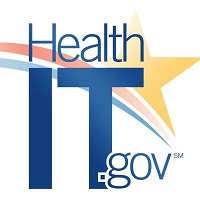 By Steven Posnack, M.S., M.H.S., Chris Muir and Brett Andriesen
By Steven Posnack, M.S., M.H.S., Chris Muir and Brett Andriesen
Twitter: @ONC_HealthIT
Steven’s Twitter: @HealthIT_Policy
Get your 2019 off to a start with new and updated standards! Since the 2018 comment period on the Interoperability Standards Advisory (ISA) closed on October 1, we combed through all your comments and made improvements based on your suggestions.
If you’re new to the ISA, you will find it contains a variety of standards and implementation specifications curated by developers, standards gurus, and other stakeholders to meet interoperability needs (a term we use in the ISA to represent the purpose for use of standards or implementation specifications – similar to a use case) in healthcare. The ISA itself is a dynamic document and is updated throughout the year, reflecting a number of substantive and structural updates based on ongoing dialogue, discussion, and feedback from stakeholders like you:
- RSS feed functionality to allow you to track ISA revisions in real-time;
- Shifting structure from lettered sub-sections to a simple alphabetized list (i.e., removing I-L, II-C, III-A, etc.), and relocating models and profiles from Section IV to an Appendix;
- Moving Unique Device Identification from Section I to Section II;
- Revising many of the interoperability need titles to better reflect their uses and align with overall ISA best practices;
- Several new interoperability needs, including:
- Representing relationship between patient and another person (such as a provider, caregiver, family member, etc.);
- Several electronic prescribing-related interoperability needs, including prescribing using weight-based dosing, request for additional refills, etc.
- Operating Rules for claims, enrollment, and premium payments (Phase IV); and
- More granular updates such as added standards, updated characteristics, and additional information about interoperability needs, among others.
We also released the 2019 Reference Edition, a “snapshot” pdf view of the current ISA. You need to remember that this 2019 Reference Edition is available if you want a static version of the ISA that won’t change.
The ISA should be considered as an open and transparent resource for industry and reflects the latest thinking around standards development with an eye toward nationwide interoperability.
The ISA traditionally has reflected recommendations from the Health IT Advisory Committee and its predecessors the HIT Policy Committee and HIT Standards Committee and includes an educational section that helps decode key interoperability terminology. If you have additional suggestions for other resources to include in this area, just let us know.
ONC received 74 comments on the ISA this year, resulting in nearly 400 individual recommendations for revisions. We truly appreciate the time you took to review the ISA and provide comments. If you spot something that we may have missed or identify other improvements, feel free to let us know and we will continue our work to update the ISA throughout the year.
This post was originally published on the Health IT Buzz and is syndicated here with permission.
